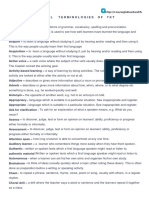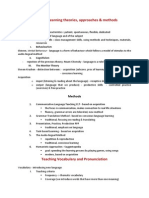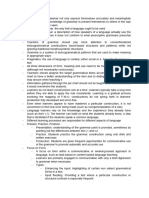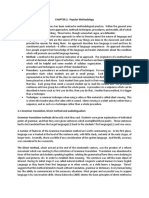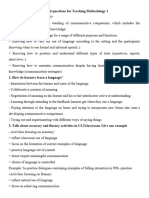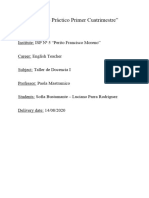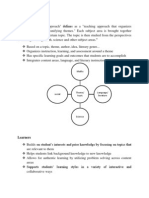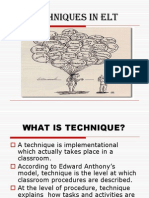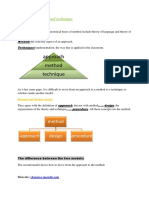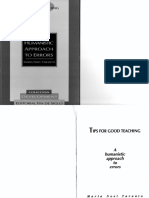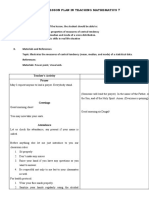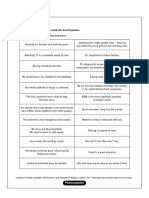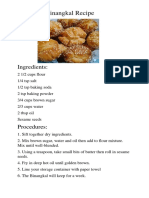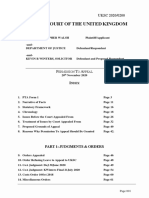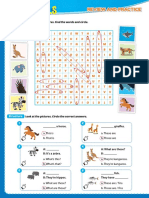1. Bilingual Dictionary - a dictionary which deals with two languages, offering definitions and 1.
1. Bilingual Dictionary - a dictionary which deals with two languages, offering definitions and
examples in both. Usually, bilingual dictionaries are divided into two halves. In the first half, words examples in both. Usually, bilingual dictionaries are divided into two halves. In the first half, words
in one language (say Arabic) are defined in the other (say English). Then in the second half, the in one language (say Arabic) are defined in the other (say English). Then in the second half, the
words are in the other language (say English) and defined in the first language (say Arabic). words are in the other language (say English) and defined in the first language (say Arabic).
Different from MLD. Different from MLD.
2. Check Questions are asked by the teacher to make sure that students have understood a new 2. Check Questions are asked by the teacher to make sure that students have understood a new
situation, concept, piece of grammar or vocabulary item. situation, concept, piece of grammar or vocabulary item.
3. Choral Repetition is when the teacher gets all the students to repeat a short phrase or sentence at 3. Choral Repetition is when the teacher gets all the students to repeat a short phrase or sentence at
the same time and with the same rhythm. the same time and with the same rhythm.
4. Murmuring is when teachers tell their students to practise saying things ‘under their breath’ - so 4. Murmuring is when teachers tell their students to practise saying things ‘under their breath’ - so
they all try out saying something new very quietly and in their own time. they all try out saying something new very quietly and in their own time.
5. Controlled Practice is practice where students are expected to concentrate on specific language 5. Controlled Practice is practice where students are expected to concentrate on specific language
items, often in the context of Cue Response Drill. items, often in the context of Cue Response Drill.
6. Correcting Students happens when students make mistakes (slips, errors or attempts). There are 6. Correcting Students happens when students make mistakes (slips, errors or attempts). There are
various ways of telling students they are wrong so that they can get it right. Different from various ways of telling students they are wrong so that they can get it right. Different from
responding -> echo correction, gentle correction, self correction. responding -> echo correction, gentle correction, self correction.
7. cue-response drills are when a teacher gives a cue (or stimulus) such as ‘question ... where . . , 7. cue-response drills are when a teacher gives a cue (or stimulus) such as ‘question ... where . . ,
nominates a student and the nominated student offers response such as where is the station? nominates a student and the nominated student offers response such as where is the station?
8. Deductive Approach is a name given to procedures where students first learn rules and then try to 8. Deductive Approach is a name given to procedures where students first learn rules and then try to
make sentences on the basis of those rules (see INDUCTIVE APPROACH) make sentences on the basis of those rules (see INDUCTIVE APPROACH)
9. Inductive Approach - the name given to procedures where students come into contact with 9. Inductive Approach - the name given to procedures where students come into contact with
examples of the language and try to work out how it is constructed, rather than having it told to examples of the language and try to work out how it is constructed, rather than having it told to
them. them.
10. Discovery Activities are those where students are shown language and asked to try to work out how 10. Discovery Activities are those where students are shown language and asked to try to work out how
it works (rules, etc) for themselves rather than being told by the teacher. → INDUCTIVE it works (rules, etc) for themselves rather than being told by the teacher. → INDUCTIVE
APPROACH APPROACH
11. Drill Technique where the teacher asks students to repeat words and phrases, either in CHORUS or 11. Drill Technique where the teacher asks students to repeat words and phrases, either in CHORUS or
individually, then gets them to practise substituted (but similar) phrases, still under the teacher's individually, then gets them to practise substituted (but similar) phrases, still under the teacher's
direction. direction.
12. Slips are small mistakes of production that students can usually Self-Correct if they are pointed out 12. Slips are small mistakes of production that students can usually Self-Correct if they are pointed out
(i.e. they actually know the right way of saying it, but have just ‘slipped up’), (i.e. they actually know the right way of saying it, but have just ‘slipped up’),
13. Attempt is a term used to describe the kind of mistakes students make because they are trying 13. Attempt is a term used to describe the kind of mistakes students make because they are trying
to say something they do not yet quite know how to say. to say something they do not yet quite know how to say.
14. Errors are MISTAKES that students make because they have not learnt some language correctly. 14. Errors are MISTAKES that students make because they have not learnt some language correctly.
15. Mistakes occur whenever students produce language that is not correct. -+ attempts , errors, slips 15. Mistakes occur whenever students produce language that is not correct. -+ attempts , errors, slips
16. Gentle Correction is a term used to describe situations where the teacher indicates that something 16. Gentle Correction is a term used to describe situations where the teacher indicates that something
has gone wrong with a hint or a nod but does not press students to correct it immediately, has gone wrong with a hint or a nod but does not press students to correct it immediately,
reformulation is often used in this way. reformulation is often used in this way.
17. Echo Correction a technique whereby the teacher repeats what a student has just said (often in a 17. Echo Correction a technique whereby the teacher repeats what a student has just said (often in a
questioning way) to indicate that something isn't quite right. questioning way) to indicate that something isn't quite right.
18. Self-Correction is when students can correct their own slips once it has been indicated that 18. Self-Correction is when students can correct their own slips once it has been indicated that
something is wrong. something is wrong.


